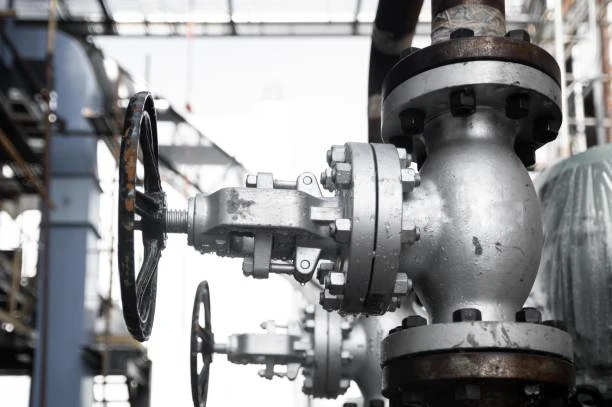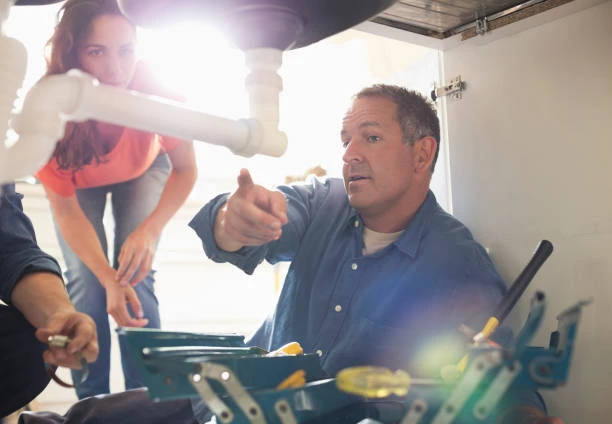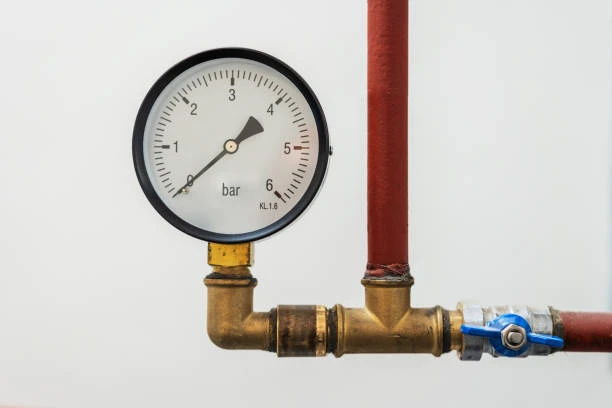Valves are integral components in a wide range of industries, controlling the flow of liquids, gases, and other materials in various systems. From plumbing systems in homes to complex industrial processes, valves ensure that operations run smoothly and safely. In this article, we will delve into the different types of valves, their functions, and the various applications in which they are used. Whether you’re an engineer, technician, or just someone interested in understanding how valves work, this comprehensive guide will provide you with the essential knowledge.
What Is a Valve?
A valve is a mechanical device that regulates, directs, or controls the flow of fluids (liquids, gases, or slurries) by opening, closing, or partially obstructing passageways. Valves are essential for managing the distribution and pressure of these fluids, ensuring systems operate efficiently and safely.
Valves are useful in almost every industry, including oil and gas, water treatment, manufacturing, power generation, and even food processing. Without them, it would be nearly impossible to control the flow of materials in these systems, making them indispensable to both large-scale operations and small-scale processes.
Types of Valve
Valves come in many shapes and sizes, each designed for specific applications and flow control needs. The following are some of the most common types of valves useful across various industries:
1. Ball Valves
Ball valves are one of the most popular types of valves due to their reliable and straightforward design. They consist of a ball with a hole in the center that rotates to control the flow of fluid. When the hole is align with the flow path, the valve is open; when the ball is rotated 90 degrees, the hole is perpendicular to the flow, closing the valve.
Applications: Ball valves are useful in systems where tight shutoff is needed, such as water pipelines, gas systems, and HVAC (heating, ventilation, and air conditioning) systems.
2. Gate Valves
Gate valves are commonly useful in applications where the full flow of liquid or gas is required, and the valve must be either fully open or fully close. The Gate valves use a wedge-shaped gate that slides between two seats to control the flow. When the valve is open, the gate is fully retract, allowing maximum fluid flow.
Applications: Gate valves are typically useful in water, oil, and gas pipelines, as well as in sewage and wastewater treatment plants.
3. Globe Valves
Globe valves are useful to regulate flow in a system. They have a spherical body with an internal baffle that directs the flow. The valve’s stem moves a plug or disk toward or away from a seat, which regulates the flow of fluid. Globe valves provide excellent throttling control, making them ideal for applications where precise flow regulation is necessary.
Applications: Globe valves are often useful in systems that require flow control, such as in steam systems, fuel systems, and cooling systems.

4. Check Valves
Check valves are important to allow flow in only one direction. They automatically close when the flow reverses to prevent backflow, which can damage systems or cause contamination. Check valves are commonly useful in piping systems to maintain the proper direction of flow and prevent reverse flow that could cause damage.
Applications: Check valves are useful in water treatment plants, sewage systems, oil pipelines, and in household plumbing systems to prevent backflow.
5. Butterfly Valves
Butterfly valves are lightweight and compact, making them ideal for applications where space is limit. They consist of a rotating disk or vane that controls the flow of fluid. The disk is mount on a shaft, and when the valve is turn, the disk either obstructs or allows the flow of fluid through the pipeline.
Applications: Butterfly valves are often useful in large-scale industrial processes, such as water distribution, chemical processing, and fire protection systems.
6. Pressure Relief Valves
Pressure relief valves are safety valves important to prevent overpressure in a system by releasing excess pressure. These valves open automatically when the internal pressure reaches a set limit, ensuring that the pressure in the system does not exceed safe levels.
Applications: Pressure relief valves are commonly useful in boilers, pressure vessels, and HVAC systems to protect against excessive pressure buildup.
7. Needle Valve
Needle valves are useful for precise control of flow rates in low-flow applications. They have a long, tapered needle-like plunger that fits into a matching seat, allowing fine adjustments to be made to the flow.
Applications: Needle valves are often useful in laboratory settings, chemical dosing, or fuel control systems where precise flow control is required.
8. Pressure Regulator Valves
Pressure regulator valve maintain a consistent output pressure in a system, regardless of fluctuations in input pressure. These valve automatically adjust to maintain the desired pressure level, which is critical in many industrial and commercial applications.
Applications: Pressure regulators are commonly useful in gas pipelines, medical gas systems, and steam systems.
9. Solenoid Valve
Solenoid valves are electrically operated valves that use an electromagnetic solenoid to open or close the valve. They are often used for controlling the flow of liquids and gases in automated systems.
Applications: Solenoid valves are widely useful in irrigation systems, automatic control systems, and in automotive fuel systems.
How Do Valve Work?
Valve operate by manipulating a mechanical element (such as a ball, gate, or diaphragm) that either blocks or allows fluid to flow through the valve. The operation of a valve can be manual or automated:
- Manual Valve: These are operated by hand using a wheel, lever, or handle. Manual valves are useful in smaller systems where operator control is feasible and desirable.
- Automated Valve: These valves are operated by electric, pneumatic, or hydraulic actuators. Automated valve are essential in large-scale systems where continuous monitoring and control are required.
The valve’s design determines how it interacts with the flow, whether it allows complete flow, partial flow, or shuts off completely. The choice of valve type depends on factors such as the medium (liquid, gas, slurry), pressure, temperature, and the specific requirements of the application.
Applications of Valve
Valves are crucial in a wide range of industries and applications. Here are some of the key sectors where valve play a critical role:
1. Water and Wastewater Treatment
Valve control the flow of water and wastewater in treatment plants, ensuring that the water is processed, filtered, and distributed effectively. They are also useful to prevent backflow and regulate flow rates.
2. Oil and Gas Industry
In the oil and gas industry, valve are useful to control the flow of crude oil, natural gas, and refined products through pipelines, refineries, and processing plants. These valve help manage the extraction, transport, and distribution of hydrocarbons.
3. Chemical Processing
In chemical manufacturing, valve control the flow of hazardous and non-hazardous chemicals through reactors, pipelines, and vessels. The precise control of chemicals is essential for both safety and efficiency in these environments.
4. HVAC Systems
Valve in HVAC systems regulate the flow of refrigerants, air, and water to ensure proper heating, ventilation, and air conditioning in buildings. These valve help maintain temperature control and air quality in residential, commercial, and industrial settings.
5. Power Generation
In power plants, valve regulate steam, water, and fuel flows in boilers, turbines, and cooling systems. They are crucial for maintaining safe and efficient operations in the production of electricity.
6. Food and Beverage Industry
Valve in the food and beverage industry ensure the safe and hygienic handling of ingredients, liquids, and gases in manufacturing processes. They are useful to control flow rates and maintain the integrity of the product.
The Importance of Valve Maintenance
Like any mechanical component, valve require regular maintenance to ensure optimal performance and safety. Poorly maintained valve can cause system failures, leaks, or even accidents. Routine inspections, cleaning, lubrication, and testing should be perform to ensure that valve operate effectively and safely.
Conclusion
Valve are essential components in countless industrial, commercial, and residential applications. From regulating the flow of fluids in pipelines to controlling pressure and preventing dangerous backflow, valve ensure the safe and efficient operation of systems. With various types of valve available, each designed for specific functions and applications, understanding how each valve works is crucial for selecting the right valve for the job. Proper valve maintenance is equally important to keep systems running smoothly and safely.
FAQs
1. What is the main function of a valve?
The main function of a valve is to control the flow of fluids (liquids, gases, or slurries) by opening, closing, or partially obstructing the flow passage.
2. What is the difference between a ball valve and a gate valve?
A ball valve uses a ball with a hole to control flow, providing quick and reliable shutoff, while a gate valve uses a wedge-shaped gate to regulate flow, allowing for full or complete shutoff but not precise flow control.
3. What industries use valve?
Valves are useful in a wide variety of industries, including oil and gas, water treatment, chemical processing, food and beverage, HVAC, and power generation.
4. How do I know which type of valve to use?
The choice of valve depends on the application, such as the type of fluid, pressure, temperature, and the specific function (e.g., regulating flow, preventing backflow, etc.). Consulting with an engineer or valve manufacturer is recommend for selecting the appropriate valve.
5. What is the purpose of a valve?
A valve regulates, directs, or controls the flow of fluids (liquids, gases, or slurries) within a system.


















